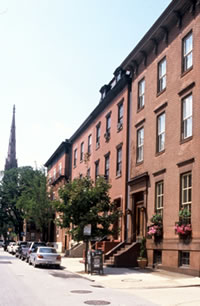| What kind of photo-documentation must be sent
with the application?
Answer
The photographs must adequately document the “before”
and “after” conditions of the historic building—the
exterior, interior, and the building’s site and environment.
Follow these tips:
TIPS FOR DOCUMENTATION
- Photographic documentation submitted with applications should
be in the form of conventional 35mm color photographs.
- Photographs must be labeled on the back with the following
information: address and building name (if applicable), view (e.g.
north side), and description (e.g., plaster damage in dining room,
north wall).
- Photographs must be numbered and keyed to the description of
proposed work on the Part 2 form and keyed to a plan(s) of the
building.
- Applicants must use their own judgment as to how many photographs
adequately “tell the story” of their building. Larger
projects require more photographs to provide detail shots or to
illustrate the various elements and areas of a large building
or complex.
- Despite the popularity and increasing
sophistication of digital photography, NPS has found that digital
photographs generally do not provide the level of detail or clarity
required for review.
- Photocopied photographs and instant photographs are
not adequate for review. If an applicant cannot supply better photographs,
the SHPO and the NPS may not be able to evaluate an application,
and the application may be denied certification of rehabilitation.

|
 |

This Baltimore, Maryland, row house (right) was
rehabilitated for rental residential use. Photo:
NPS files |
